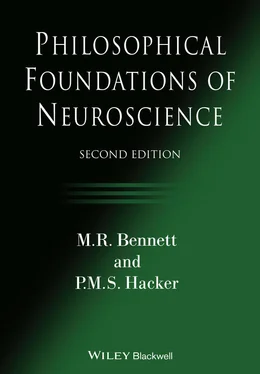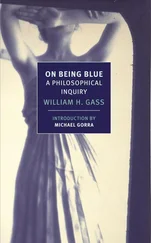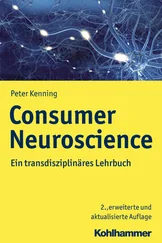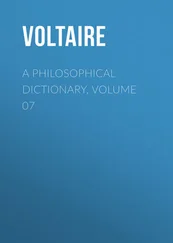Apart from those who are insane, ‘out of their mind’, one does not come across people who do not believe in their own individuality, though there are many who do not believe in the separation of mind and matter. Belief in one’s own existence seems to depend very little on deliberate instruction. 10
Moreover, Adrian continued, ‘in the study of the human ego, introspections are almost all we have to guide us’. ‘Introspections’, presumably, reveal to us the sensory, perceptual and emotional contents of consciousness. This (mis)conception conforms with the venerable philosophical tradition that stems from Descartes and the British empiricists. It is a general (mis)conception that is still characteristic of much neuroscientific reflection on these matters, especially among those neuroscientists who think that ‘qualia’ are the mark of conscious life – a feature that seems irreducibly ‘mental’ (for a detailed discussion of qualia, see §§11.3–11.3.5).
Adrian’s confusions about the ego
Adrian was exceedingly hesitant to commit himself to any firm doctrine concerning the nature of what he called ‘our ego’. He quoted the neurologist Francis Schiller, who claimed in 1951 that consciousness is a ‘logical construction’, and the ego ‘a convenient abbreviation, an abstract of the multiplicity of objects from which it is developed’ – this, Adrian averred, ‘seems to me a reasonable position to have reached’. 11For, he thought, ‘the physiologist is not forced to reject the old fashioned picture of himself as a conscious individual with a will of his own’, for the view embraced acknowledges some kind of validity to the introspective as well as to the physiological account, while admitting that the two are incompatible. What that implies, Adrian claimed, is that in the fullness of time the two accounts will have to be reconciled. So it would, he held, be absurd to suppose that the scientific account will not be altered.
It is noteworthy that this (essentially Russellian) conception is actually at odds with the Cartesian view of the ego of which Adrian previously approved. It is probable that Adrian had no clear grasp of the Russellian term of art ‘logical construction’. For if consciousness is a logical construction and the ego a convenient abbreviation, then the immediate awareness of the self that Adrian endorses is as much of an illusion as an immediate acquaintance with the average man (the average man being uncontroversially a logical construction). Confusions concerning the ‘ego’ and the ‘self’ will concern us in chapter 14.
2.3 John Eccles and the ‘Liaison Brain’
Eccles’s achievement
After studying medicine at Melbourne University, John Eccles (1903–1997) went to Oxford in 1925 as a graduate student to work with Sherrington, who was at that time engaged in research with Liddell on the characteristics of the myotatic reflex and with Creed on the flexion reflex. Eccles’s first experimental work was done with Creed. It was on the subject destined to dominate his research for over forty years: the mechanism of inhibitory synaptic transmission. After completing his DPhil in 1929, he joined Sherrington’s research group, and developed a technical improvement of the torsion myograph in preparation for a collaboration concerned with research on the flexion reflex and inhibition. These experiments were to see the last flowering of Sherrington’s scientific genius at the age of seventy-five. The work on the ipsilateral spinal flexion reflex introduced Eccles to the technique of stimulating nerves first with just a threshold conditioning volley, then at later intervals with a subsequent test volley in order to tease out the time course of the central excitatory and inhibitory states. This approach, when applied to the mechanism of transmission in the spinal cord, gave a very precise measure of the time course of the central excitatory and inhibitory states, or, as we now know, the excitatory and inhibitory postsynaptic potentials. This was shown by Eccles and his colleagues some twenty years later, when they made the first intracellular recordings of postsynaptic potentials in motoneurones. Subsequent studies of inhibitory synaptic transmission using intracellular electrodes were carried out by Eccles and his colleagues at successively higher levels of the central nervous system. These provided a functional microanatomy of the synaptic connections to be found in the cerebellum, the thalamus and the hippocampus. In this way Eccles completed the research programme described by Sherrington in The Integrative Action of the Nervous System half a century earlier.
Eccles’s interest in themind–brain problem
Eccles had entered the field of neuroscience as a result of an inspirational experience he had had at the age of eighteen that changed his life and aroused in him an intense interest in the mind–brain problem. 12In the 1970s, evidently stimulated by the work done by R. W. Sperry and his colleagues in the 1960s on the results of hemispherectomy, he turned at last to these philosophical questions of his youth, first in The Self and its Brain (1977), a book he wrote with Karl Popper, and subsequently in his Gifford Lectures of 1977–8, published in 1984 as The Human Mystery . He opened his Gifford Lectures with a handsome tribute to Sherrington’s Gifford Lectures forty years earlier. Eccles remarked that the general theme of Man on his Nature had been the defence of a form of dualism – a doctrine that was, by the 1970s, antipathetic to established philosophy. Nevertheless, it was a doctrine that Eccles deeply admired and, moreover, believed to have been given experimental confirmation by Kornhuber’s work on the electrical potential generated in the cerebral cortex prior to performing an intentional action and by Sperry’s work on split-brain patients. Hence, he aimed, in his own Gifford Lectures, to defend Sherrington’s conception, to ‘define the mind–brain problem more starkly’, 13and to bring to bear on the problem these most recent findings in neuroscience.
Popper’s influence
The general framework for Eccles’s reflections was furnished by Popper’s revival of a misconceived idea of the great nineteenth-century mathematical logician Gottlob Frege. 14Frege distinguished between the perceptible ‘outer world’ of physical objects, the private ‘inner world’ of mental entities, and a ‘third realm’ of thoughts (propositions) that are imperceptible by the senses, but nevertheless public and shareable. Popper followed suit, distinguishing between World 1 of physical things, World 2 of mental things, and World 3 of thoughts, theorems, theories and other abstracta . The conception is confused, since although we distinguish material objects from mental states, and both from propositions or theorems, these do not collectively constitute ‘worlds’ in any sense whatsoever. Furthermore, neither mental states nor propositions are denizens of a distinct ‘world’. There is only one world, which is described by specifying whatever is (contingently) the case. We do indeed talk of people’s mental states of cheerfulness or depression, or of their having toothache. But this does not imply that cheerfulness, depression or toothache are peculiar mental entities that exist in an ‘inner world’. These nominals (‘cheerfulness’, ‘depression’, ‘toothache’) merely provide an indirect way of talking of people being cheerful or depressed and of their tooth’s hurting – it introduces no new entities, merely new ways of talking about existing entities (e.g. about human beings and how things are with them). Similarly, we talk of propositions, theorems and other abstracta – but this too only appears to introduce new entities, and is really no more than a convenient way of talking about what is or might be said, asserted, or proved, etc. There is absolutely no need to succumb to Platonism and conjure new entities into existence and new worlds for them to inhabit. All talk of expressions standing for ‘abstract entities’ is a misleading way of saying that expressions that look as if they stand for concrete entities do not do so at all, but rather fulfil quite different functions. To be sure, this does not mean that there are no mental states, no cheerfulness, depression or anxiety, or that there are no propositions, no theories or theorems. On the contrary, it means that there are – only they are not kinds of entities.
Читать дальше












